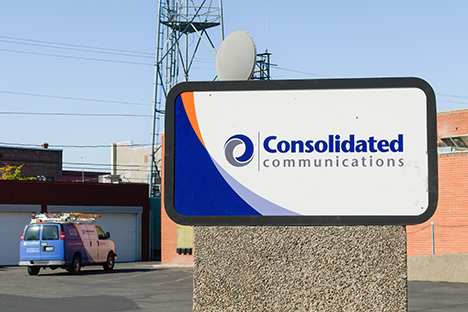As I read the third quarter earnings release for Consolidated Communications (Nasdaq: CNSL), I wondered why SafetyNet Pro gave the company a low rating. After all, the telecom services provider has paid the same quarterly dividend since 2006 and claimed a reasonable payout ratio of 69% over the past nine months.
This is where it’s helpful to understand how to read financial statements. If you don’t, no worries. I’ll do it for you.
Consolidated Communications claims a 69% payout ratio by dividing dividends paid, which was $67 million, by something it calls “cash available to pay dividends,” which totaled $97 million.
However, I have an issue with this cash available to pay dividends figure – and so does SafetyNet Pro.
Management calculates this number by taking adjusted EBITDA (earnings before interest, taxes, depreciation and amortization) and adding or subtracting a few items such as capital expenditures.
My problem with the numbers is that Consolidated Communications’ adjusted EBITDA includes investment income and distributions, noncash compensation and other items that are not related to running its business.
Those line items are typically not included in a statement of cash flows, which is the most accurate metric for determining whether a company can afford its dividend, not EBITDA, adjusted or not.
Some use EBITDA as an easy substitute for cash flow, but it doesn’t always fit perfectly. Here’s why…
When looking at cash flow from operations, you’re measuring how much cash the operation of the business generated. Investment income and noncash compensation, do not reflect the cash coming in and going out the door by selling telecom services.
When I look at whether Consolidated Communications can afford its dividend, I see that cash flow from operations was $125 million in the first three quarters. Capital expenditures, also known as purchases of property, plant and equipment, was $119 million, giving us free cash flow of $6 million. (Free cash flow is calculated by subtracting capital expenditures from cash flow from operations.)
Meanwhile, the company paid $67 million in dividends. That is not sustainable if free cash flow is only $6 million.
Keep in mind, the company is not doing anything illegal (as far as I can tell) or cooking its books. It is calculating its payout ratio differently than is standard. It’s entitled to do that, but I don’t believe it fairly reflects its ability to pay its dividend.
In 2018, free cash flow is forecast by Bloomberg to rise to $150 million. If the company is able to hit that figure next year, it could get an upgrade.
But for now, despite a solid dividend-paying track record, the company’s current finances cannot support the dividend. It will have to find the money to pay it, improve its cash flow or reduce the dividend.
Dividend Safety Rating: D
If you have a stock whose dividend safety you’d like me to look at, leave the ticker in the comments section below.
Also, here’s access to our dividend reinvestment calculator. It’s a free, powerful tool that helps you project an investment’s growth.
Good investing,
Marc

